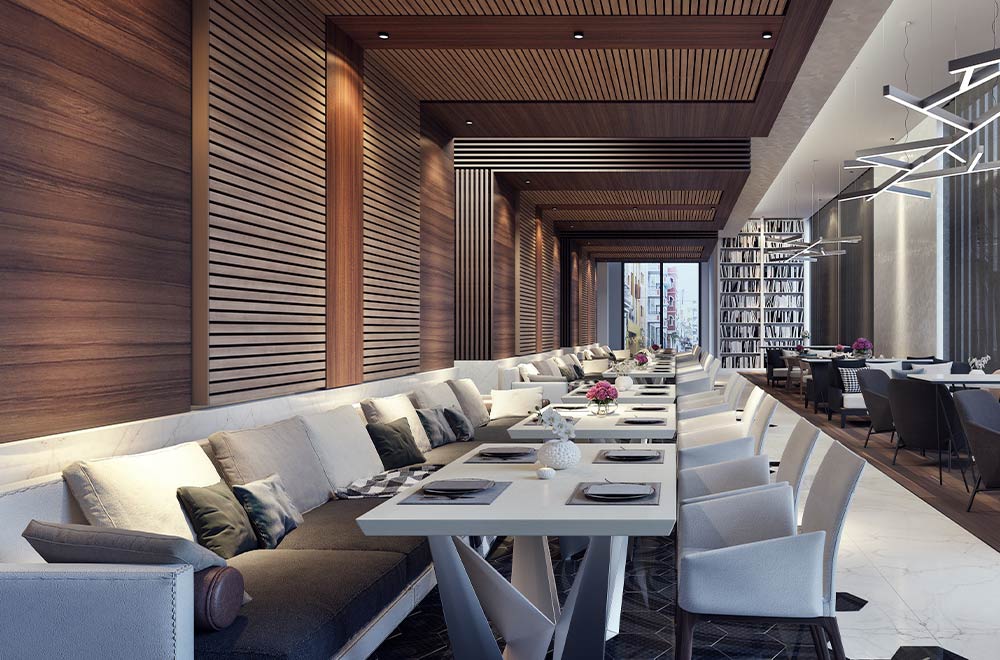Romantic Restaurants Islamabad: Suitable Dining Destinations for Couples
Savor Genuine Eastern Cuisine With a Pan-Asian Spin for a Culinary Experience
Starting a culinary trip with genuine Eastern cuisine, boosted with a Pan-Asian spin, offers a distinct chance to explore the abundant tapestry of tastes that specify the area's varied cooking practices. This experience invites you to savor the splendid equilibrium of preferences-- wonderful, salted, spicy, and sour-- harmonized by fragrant natural herbs and flavors. Visualize the innovative blend of Thai curry and ramen or the unforeseen delight of sushi burritos. As you ponder these tempting dishes, think about the social narratives and historical influences that shape them, each bite offering a story waiting to be uncovered.

Discovering Pan-Asian Tastes
In the realm of worldwide gastronomy, Pan-Asian cuisine stands out for its exceptional diversity and the harmonious interaction of flavors from various Asian cultures. This culinary strategy commemorates the unique components and rich practices located throughout the continent, creating a tapestry of preferences that is both interesting and enjoyable. Key to Pan-Asian cuisine is its capacity to stabilize different tastes-- sweet, salted, spicy, and sour-- while highlighting the freshness and quality of each component.
From the umami-rich soy sauce of Japan to the fiery chili peppers of Thailand, Pan-Asian food offers a considerable scheme of flavors. These aspects are typically incorporated in innovative means, improving meals with layers of complexity. For circumstances, using fragrant herbs such as lemongrass and cilantro, usual in Vietnamese and Thai cuisine, adds a refreshing brightness to meals, while the consolidation of coconut milk delivers a luscious, abundant structure.
The emphasis on fresh fruit and vegetables and fragrant flavors makes certain that each meal is not only a banquet for the preference buds yet likewise for the detects. Pan-Asian cuisine welcomes diners to start a culinary journey, discovering the large and differed landscapes of Oriental gastronomy with every bite.
Blend Recipes to Attempt
While Pan-Asian cuisine is commemorated for its standard tastes, the contemporary cooking landscape is progressively accepting fusion meals that blend these classic aspects with influences from various other areas. This ingenious strategy not just honors the rich heritage of Asian cookeries but also presents novel preference experiences that interest modern tastes.
An archetype of such a combination dish is the Korean-Mexican taco, where marinaded bulgogi beef is covered in a cozy tortilla, covered with kimchi and a hot gochujang-infused salsa. This mix marries the vibrant, mouthwatering flavors of Korea with the lively, fresh elements of Mexican cuisine. Likewise, sushi burritos have gotten appeal, integrating the fragile artistry of Japanese sushi with the hearty, hand-held benefit of a burrito, usually including blend active ingredients like tempura shrimp and avocado with a drizzle of wasabi mayo.
One more significant dish is Thai curry ramen, which infuses the creamy, aromatic flavors of Thai curry right into the reassuring broth of typical Japanese ramen, producing a harmonious mix that entices the detects. These blend dishes extend beyond simple novelty; they stand for a cooking dialogue in between cultures, motivating expedition and technology worldwide of Pan-Asian cuisine.
Necessary Components and Seasonings
To genuinely value Pan-Asian food, one should understand the necessary active ingredients and flavors that create its structure. This diverse culinary style attracts from a rich tapestry of Oriental practices, using an unified mix of flavors and structures.
Fragrant elements are essential, with ginger, garlic, and lemongrass being ubiquitous across different Pan-Asian recipes. These ingredients provide a fragrant base that enhances taco bell cantina the complexity of tastes. Flavors such as celebrity anise, cardamom, and cinnamon introduce heat and personality, echoing influences from areas like China and India.

Cooking Strategies and Tips
Grasping the art of Pan-Asian food requires experience with its distinct cooking techniques, each adding to the vibrant tapestry of flavors this culinary custom is commemorated for. Central to these approaches is the stir-fry, a quick cooking technique that protects the dietary integrity and brilliant colors of ingredients. Utilizing a frying pan, the stir-fry approach enables for also warmth circulation, vital for accomplishing the characteristic texture and taste equilibrium of Pan-Asian dishes.
An additional fundamental method is steaming, particularly prevalent in Chinese food. This mild method preserves the all-natural tastes and nutrients of components, making it excellent for seafood and veggies. Dumplings, a precious staple, usually gain from steaming, leading to soft, delicious textures.
Cooking, additionally essential, passes on great smoky midsts to recipes such as Oriental bulgogi or Japanese yakitori (pan asian restaurant Islamabad). This method typically entails marinading components, permitting tastes to permeate deeply prior to food preparation over an open fire or hot plate
Lastly, understanding the art of stabilizing tastes-- pleasant, sour, salted, bitter, and umami-- is essential. Appropriately layering these aspects can boost a meal from normal to phenomenal, using a complex and satisfying cooking experience that personifies the essence of Pan-Asian food.
Eating Experiences Worldwide
Around the world, Pan-Asian cuisine supplies an exceptional eating experience, celebrated for its abundant tapestry of flavors and vivid presentations. This cooking phenomenon has actually transcended cultural limits, capturing the hearts and tastes buds of food lovers worldwide. In cosmopolitan cities like New York, London, and Sydney, Pan-Asian restaurants work as melting pots where culinary customs from Thailand, Japan, China, and past merge, giving diners with a diverse mix of recipes that highlight the region's diversity.
The worldwide charm of Pan-Asian cuisine depends on its ability to provide both authenticity and development. Chefs masterfully marry traditional active ingredients such as lemongrass, soy sauce, and miso find more info with modern techniques, causing dishes that are both familiar and refreshingly brand-new. This blend allows diners to start a cooking journey that values heritage while accepting modernity.
In addition, dining experiences are elevated through attentively made environments that mirror the values of Pan-Asian aesthetic appeals. From minimal Japanese-inspired interiors to lively Thai-themed spaces, each dining establishment supplies an one-of-a-kind atmosphere that enhances the culinary offerings. Consequently, customers are not just consuming a meal yet partaking in a cultural experience, making Pan-Asian dining a genuinely worldwide sensation.
Final Thought
The exploration of Pan-Asian cuisine uses an extensive understanding of the elaborate interaction of flavors and culinary traditions across Asia. By embracing blend dishes such as Thai curry ramen and sushi burritos, the cooking trip not only highlights the flexibility of typical ingredients yet likewise showcases ingenious contemporary strategies. This gastronomic experience, enhanced by cooking approaches and important flavors, provides an one-of-a-kind chance to value the multiculturalism and culinary creativity that define Pan-Asian cuisine on a worldwide scale.
Embarking on a culinary trip via genuine Oriental cuisine, improved with a Pan-Asian spin, provides a special chance to discover the rich tapestry of tastes that define the region's varied culinary practices.In the realm of worldwide gastronomy, Pan-Asian food stands out for its remarkable diversity and the unified interaction of tastes from different Asian cultures. Trick to Pan-Asian cuisine is its capability to balance contrasting tastes-- sweet, salty, spicy, and sour-- while highlighting the quality and top quality of each component.
